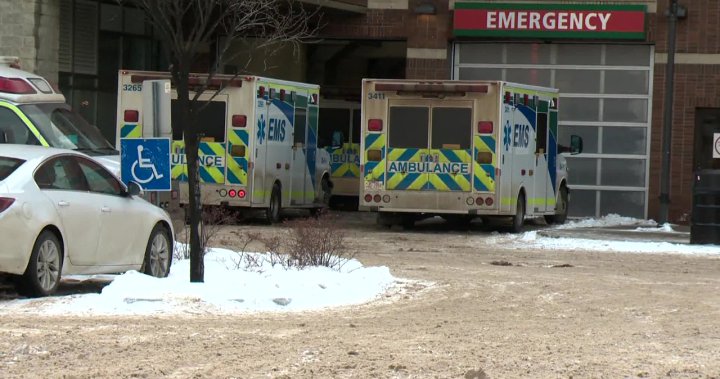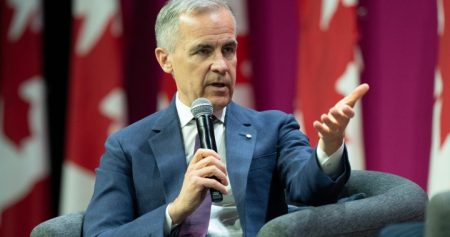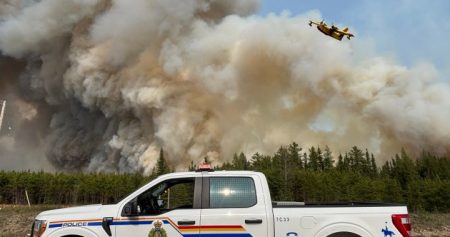The strain on Alberta’s Emergency Medical Services (EMS) system is reaching a critical point, particularly during the holiday season, as evidenced by a concerning shortage of paramedics for upcoming Christmas and New Year’s shifts. A veteran paramedic, identified only as “David” due to fear of reprisal, has revealed screenshots depicting over 200 unfilled paramedic shifts for Christmas Eve, Christmas Day, and New Year’s Eve. This whistleblower account underscores a worsening trend of understaffing during the holidays, raising serious concerns about the province’s ability to provide timely and effective emergency medical care during these crucial periods. David’s testimony suggests that the allure of working in Calgary, once a coveted destination for paramedics requiring years of experience elsewhere in the province, has diminished. Now, even recent graduates can secure full-time positions in Calgary, indicating a potential shift in the perceived desirability of these roles, possibly due to challenging working conditions and systemic issues impacting the overall attractiveness of the profession.
The shortage of paramedics reflects a broader crisis within Alberta’s healthcare system, as articulated by Mike Parker of the Health Sciences Association of Alberta. Parker emphasizes the interconnectedness of the healthcare system, highlighting that staffing shortages plague not only EMS but also emergency call centers and hospitals. This systemic deficiency creates a domino effect, impacting the entire patient care continuum, from the initial call for help to hospital admission and treatment. The lack of available paramedics to respond to emergencies translates to delayed response times and potentially life-threatening consequences for patients in need. Similarly, shortages in hospitals exacerbate the problem, leading to longer wait times in emergency rooms and further delaying the transfer of patients from ambulances, effectively trapping paramedics and preventing them from attending to other emergencies.
The Alberta government’s response to this escalating crisis has been met with skepticism from frontline paramedics like David. Despite the formation of a committee to address EMS concerns and propose improvements to working conditions, tangible changes remain elusive. The disconnect between government pronouncements and the lived reality of paramedics breeds cynicism and distrust, contributing to a sense of disillusionment and hopelessness among those bearing the brunt of the crisis. The perceived lack of meaningful action from the government underscores the urgency of addressing the root causes of the paramedic shortage, moving beyond rhetoric and towards concrete solutions that prioritize the well-being and retention of these essential healthcare professionals.
The exodus of full-time paramedics to casual positions further complicates the situation. While the overall number of paramedics in the system might appear stable, the shift towards casual work indicates a preference for greater control over work schedules and a desire to safeguard mental and physical health. This trend, while understandable from an individual perspective, further destabilizes the EMS system, making it more challenging to ensure consistent and reliable staffing levels, especially during peak periods like holidays. The pursuit of a better work-life balance by paramedics, though justified, highlights the need for systemic changes that address the underlying causes of burnout and attrition within the profession.
Alberta Health Services (AHS) acknowledges the increased demand for paramedic services during the holiday season and claims to have implemented proactive measures to mitigate potential shortages. These strategies include increasing resources, offering overtime incentives, expanding surge capacity, and collaborating with emergency departments to reduce patient off-loading delays. However, the persistent gap in filled shifts suggests that these measures are insufficient to address the underlying systemic issues contributing to the staffing crisis. The disconnect between AHS’s stated efforts and the stark reality of unfilled shifts underscores the need for more robust and impactful solutions that go beyond temporary fixes and address the root causes of the problem.
Ultimately, the critical shortage of paramedics in Alberta during the holiday season serves as a stark warning about the fragility of the province’s healthcare system. The combination of increasing demand, challenging working conditions, and a perceived lack of government responsiveness has created a perfect storm, jeopardizing the ability of EMS to provide timely and effective care to Albertans in need. The experiences of frontline paramedics like David reveal the human cost of this crisis, highlighting the urgent need for systemic change to ensure the long-term sustainability and effectiveness of Alberta’s EMS system. Addressing this crisis requires a multi-pronged approach that includes improving working conditions, addressing compensation concerns, enhancing recruitment and retention efforts, and fostering a more supportive and collaborative environment within the healthcare system. Only through such comprehensive action can Alberta ensure the continued provision of high-quality emergency medical services for its citizens.










